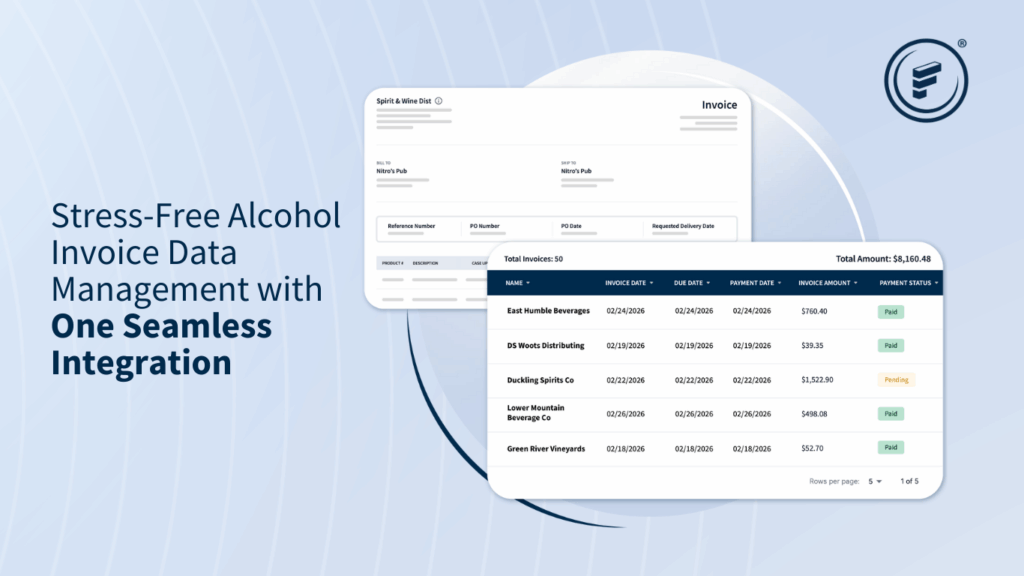What is EDI Technology?
EDI technology is the “intercompany communication of business documents in a standard format,” according to IBM. Put simply, it is an electronic format replacing paper-based documents like purchase orders and invoices. Fintech’s PaymentSource® has EDI functionality that connects your alcohol line-item invoice data to your back-office system through a single data file.
How EDI Integration Works
The first step in the process involves receiving an invoice from an alcohol distributor. This invoice contains specific line-item details like price, vendor name, product name (which could be a specific value for a business), product quantity, etc. From there, the invoice information is processed and accessible through the Fintech portal, creating an electronic data file.
The next step involves a point-to-point electronic data file transmission between Fintech and the customer’s back-office system. This happens over the internet with secure protocols in place.
After the transmission occurs, the customer will have complete visibility down to the summary or line-item level into each alcohol invoice that comes through their business. This EDI integration captures all data fields and automatically assigns a business’s designated GL coding for simplified bookkeeping.
Benefits of EDI Integration
There are multiple benefits associated with implementing EDI. No matter if you process a handful of invoices each week or are dealing with invoices from many distributors across different retail locations, EDI integration is one of the most effective B2B tools available.
Data Accuracy
The standard process for data integration involves someone manually keying in invoice data into a back-office system. This process is often impacted by human error – someone accidentally keying in the wrong number, a decimal point in the wrong location, or skipping over an invoice field, for example. These simple mistakes can drastically impact margins and leave you stuck with the time-consuming process of reconciliation to find the culprit of the margin erosion. EDI integration utilizes GL coding to ensure accuracy when transferring data fields over to your back-office system.
Save Time and Money
Manual data integration can take hours each week. Compound those hours over the course of a month and you’ll quickly notice how much time is eaten up by what should be an automated process. It can also be a costly process once you factor in the hourly wage, insurance, and other employer costs incurred by keeping someone on staff to complete this task. Instead of paying out however many hours it takes to input invoice data, you could eliminate that cost altogether with automated data integration that supports faster document transmission and transformation.
Improves Reconciliation and Reporting
This electronic record of all alcohol invoice data simplifies the reconciliation process. Instead of having to sift through paper invoices, you can quickly search your digital ledger of line-item invoice data fields to pinpoint exactly what you are looking for. It also enhances reporting capabilities because these electronic versions of your invoices can be easily integrated with other IT systems that support data analysis, for example.
Better Relationships
Automating your invoice data integration can help improve multiple relationships. Having accurate, up-to-date invoice data at hand improves relationships between your vendors because it is easier to have informed conversations about cost variances, product ordering, and more. It also helps customer-facing businesses because it frees up time to engage with customers instead of having to deal with manual data integration.
Embrace Optimization With EDI Capability
Expedite the data transmission process with EDI functionality. There is no need to waste time and resources on manual data integration. EDI automates data workflows, improves accuracy and reconciliation, and gives valuable time back that can be spent elsewhere in the business. With a high volume of alcohol invoices from different distributors, count on EDI to automate your workflows so you have faster access to more accurate invoice data.






